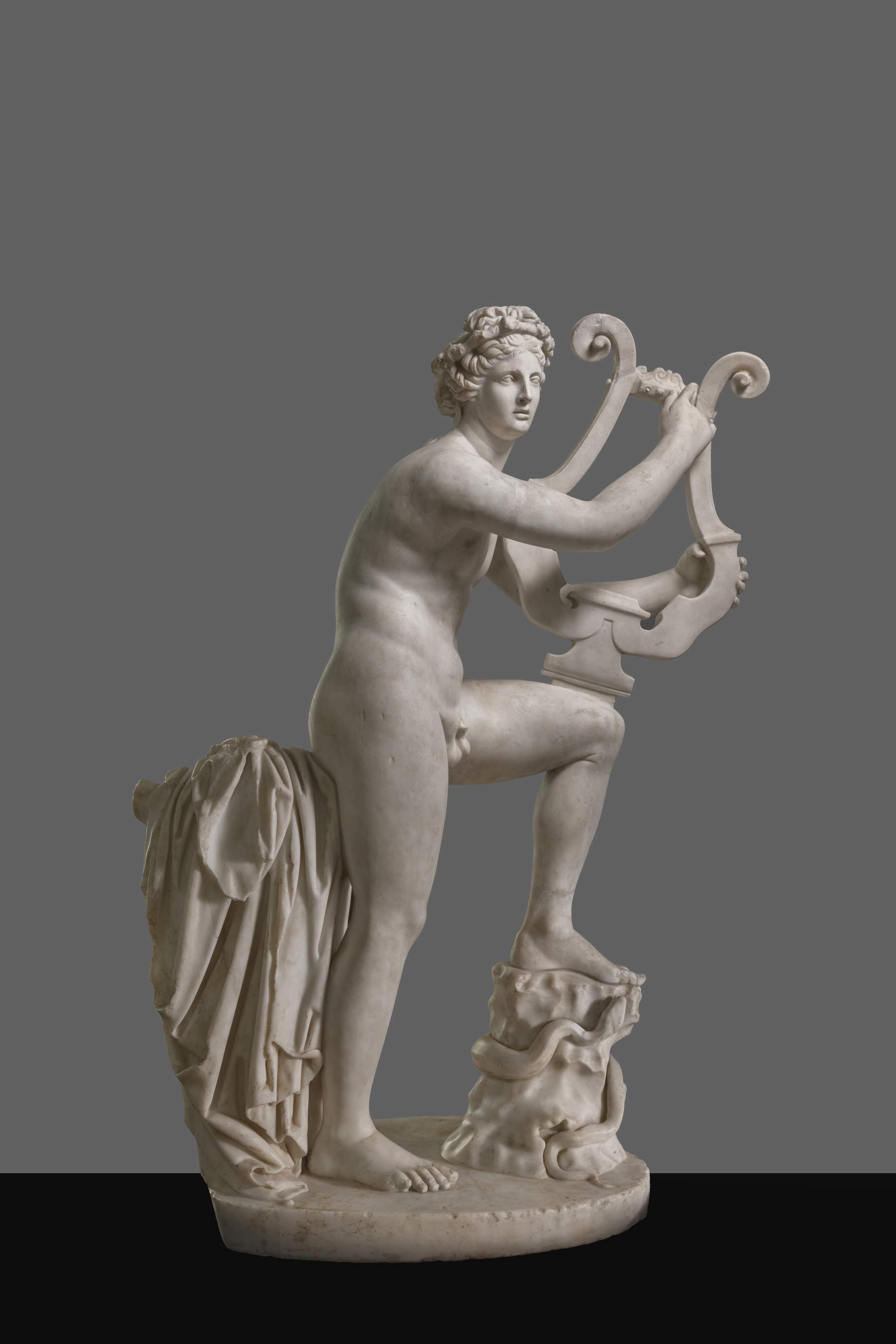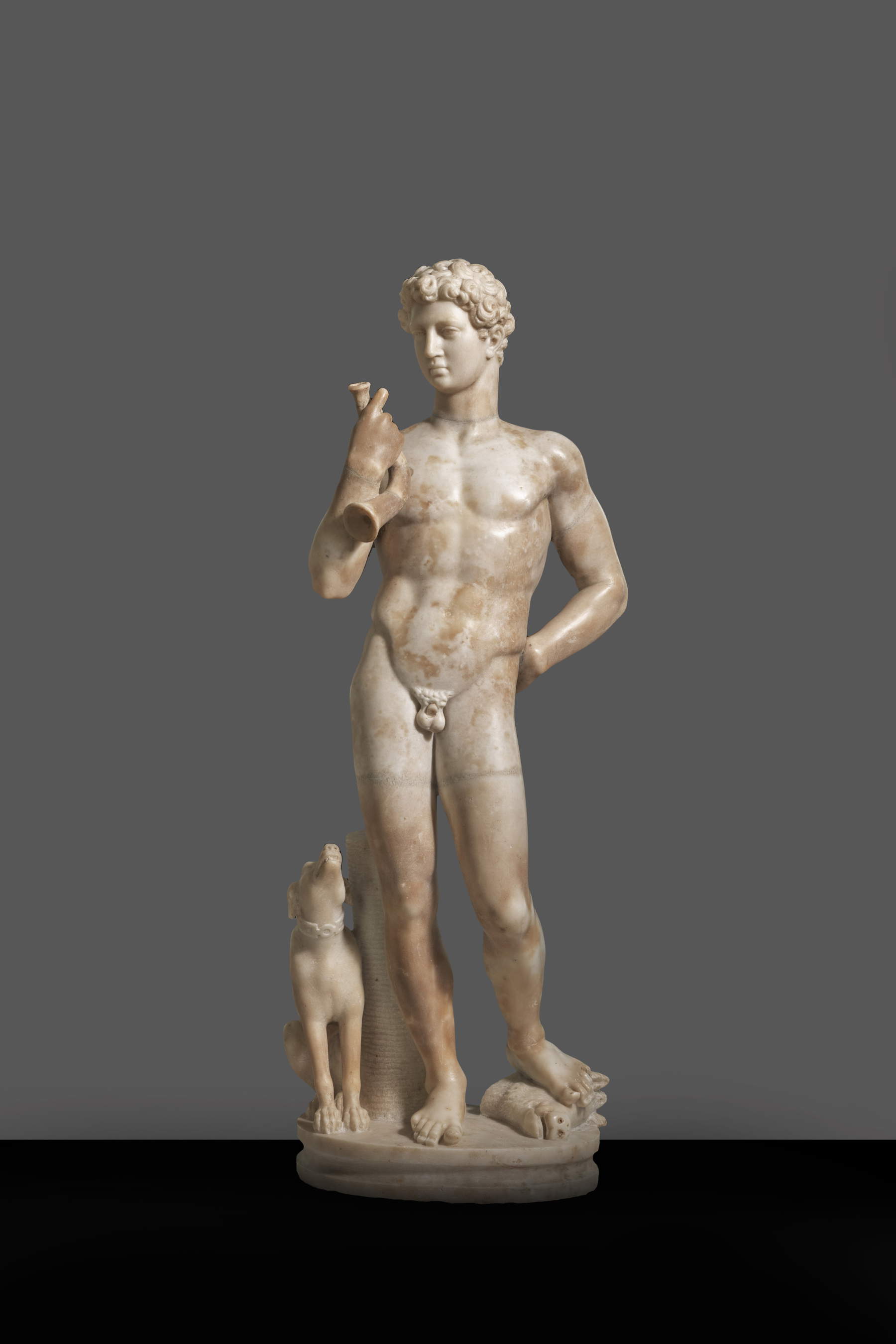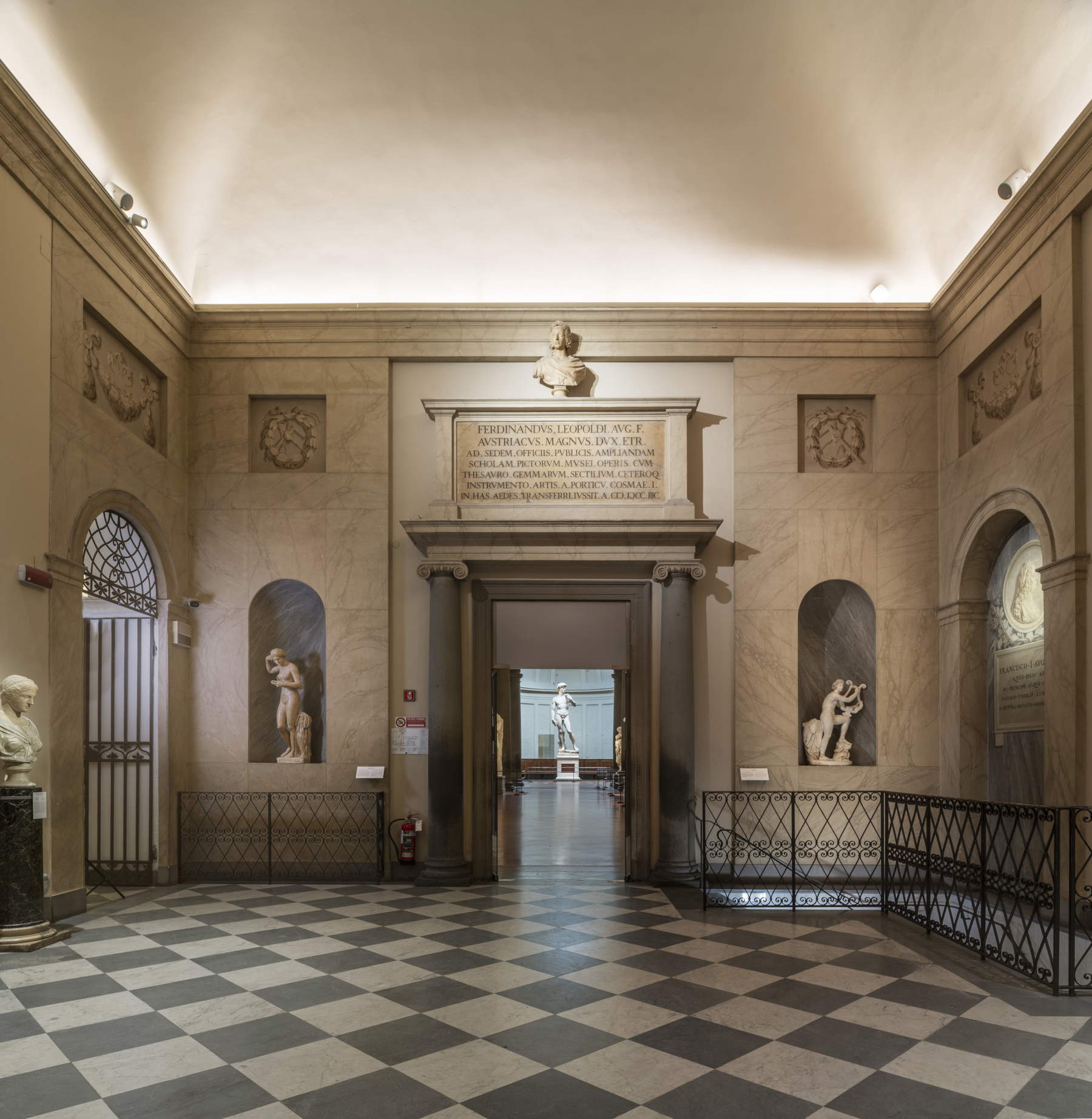The Galleria dell’Accademia in Florence and the Bargello Museums are welcoming two marble sculptures from the classical period: theApollo citaredo and theNaked Hero with Horn, which came from the National Archaeological Museum in Florence and were granted temporary storage as part of an enhancement agreement between the two autonomous institutions of the Ministry of Culture. Placed in niches along the walls of the Gallery’s current exit, they can now be seen in a new dedicated display.
The statue ofApollo citaredo, inspired by a second-century AD prototype, represents the god of music in the act of playing the zither. The idealized face, with half-open lips and rapt gaze, evokes the accompaniment of song. The work reworks motifs from the Lysippean tradition, enriched by influences from late Hellenism, and presents an iconography infrequent in sculpture in the round, comparable only to a specimen preserved in the National Archaeological Museum in Venice.
The small sculpture of theNaked Hero with Horn, which can be dated to between the 1st and 2nd centuries AD, re-proposes in its ancient core, consisting of the torso and upper legs, the famous model of Heracles devised by Polyclitus in the second half of the 5th century BC. In modern times the statue was completed with head, arms and base, transforming it into the figure of a young hunter hero, perhaps identifiable with Meleager accompanied by his dog.
The two works were placed in niches in the area corresponding to the current exit of the Accademia Gallery, a neoclassical-style room that, in the Lorraine era, served as the entrance vestibule of the Opificio delle Pietre Dure. Founded in 1588 by Grand Duke Ferdinando I de’ Medici, the Opificio was transferred between 1797 and 1798 to its current location in the former monastery of San Niccolò, on Via degli Alfani, at the behest of Ferdinand III Habsburg Lorraine, whose bust and related epigraph are still located above the main door.


The first phase of the Opificio’s activities in the new building took place in a series of rooms later transformed to make room for the David Tribune and adjacent rooms. In the vestibule, frescoed medallions with portraits of Cosimo I, Ferdinando I and Francesco I de’ Medici, flanked by their respective epigraphs, celebrate the role of the grand dukes in the development and promotion of the art of Florentine commesso.
The new works are thus added to the group of classical sculptures already in the space: the Venus in the act of girding herself with the sword taken from Mars, a rare subject in Hellenistic and Roman art and a symbol of the power of love capable of overcoming violence, and the statuette of Venus restored in modern times as Euterpe, Muse of lyric poetry. The latter, from the collection of Cardinal Leopold de’ Medici, presents in its original part an iconographic scheme that can be traced back to the sculptor Callimachus (fifth century B.C.).
Completing the display are the large head of Juno from the second century AD, documented in the Uffizi Gallery’s collections as early as the early 18th century, a male bust inspired by the official iconography of Emperor Antoninus Pius (138-161 AD), and a pseudo-antique female bust in classicist taste.
With a view to temporary storage, the two Apuan white marble sculptures underwent a thorough conservation restoration, carried out by Francesca Piccolino Boniforti under the supervision of Barbara Arbeid and Giulia Basilissi, officials of the National Archaeological Museum in Florence.The restoration focused mainly on cleaning and selective finishing of the still uneven surfaces. The choice was made not to remove marble fragments that had been re-added in previous interventions, to ensure the stability of the additions. The fillings were made with a mortar based on lime and micronized calcium carbonate powder, added with acrylic resin emulsion; discordant areas were retouched with a reversible color match, significantly improving the legibility of the sculptures. Upon completion, protection was applied to facilitate future maintenance operations.
The intervention required the design of a new layout dedicated to the exhibition, curated by Elvira Altiero and Eleonora Pucci and architects Claudia Gerola, Roberto Lembo and Barbara Francalanci of the museum system of the Galleria dell’Accademia in Florence and the Bargello Museums. The initiative was made possible thanks to the close collaboration between the two Florentine museum institutions, united by common goals of protection and enhancement. The deposit also makes it possible to make accessible to the public two works hitherto not on display.

“I consider this mode of loyal and effective institutional collaboration between the National Archaeological Museum of Florence and the Galleria dell’Accademia to be a happy success, allowing the combination of protection and enhancement, returning to the enjoyment of the community two ancient works on which careful restoration work has been carried out,” stresses the director of the Galleria dell’Accademia of Florence and Bargello Museums Andreina Contessa. “The enjoyment of cultural heritage,” she continues, “is both the goal and the object of a museum institution: in fact, these two ancient works will now be visible to the millions of visitors who frequent the Accademia Gallery in Florence, while promoting knowledge, conservation, promotion and restoration.”
“The occasion networks two excellences of the Florentine cultural scene, related by the desire to bring together in a single chain the conservation and enjoyment of cultural heritage,” comments the director of the National Archaeological Museum of Florence Daniele Federico Maras. “In fact, thanks to a careful restoration and the new prestigious exhibition venue, the two sculptures of the Archaeological Museum return to their function ’for the ornament of the State, for the utility of the public and to attract the curiosity of Foreigners,’ according to the will expressed in the ’family pact’ that marked the passage of the collections from the Medici to the Lorraine in 1737.”
“In my role as regional coordinator of the Regional Directorate of National Museums Tuscany, and in view of the imminent and final administrative handover of museum sites and cultural assets from our Institute to the new autonomous Museums, including the National Archaeological Museum of Florence,” says Stefano Casciu, “I welcome and share the initiative to exhibit some ancient sculptures that have not been accessible to the public until now, in order to enrich the offer of a museum such as the Accademia Gallery, which has precisely in sculpture one of its strong points.”
 |
| Florence's Galleria dell'Accademia welcomes two statues from the classical age on deposit from the Archaeological Museum |
Warning: the translation into English of the original Italian article was created using automatic tools. We undertake to review all articles, but we do not guarantee the total absence of inaccuracies in the translation due to the program. You can find the original by clicking on the ITA button. If you find any mistake,please contact us.